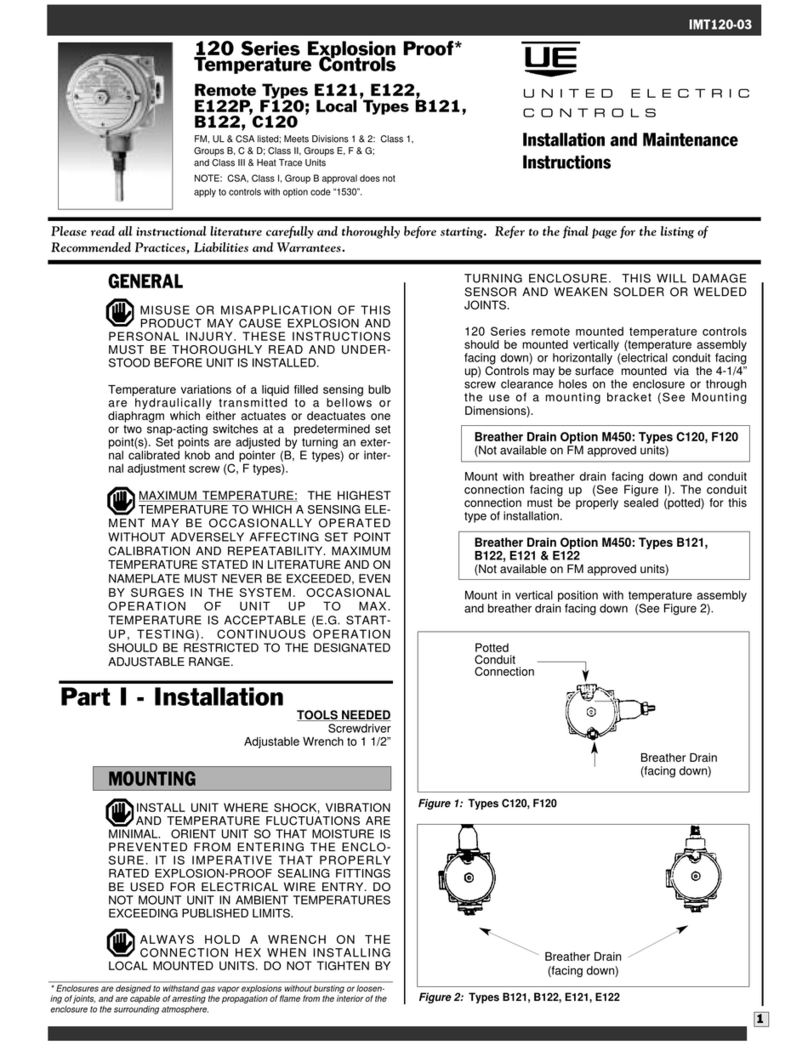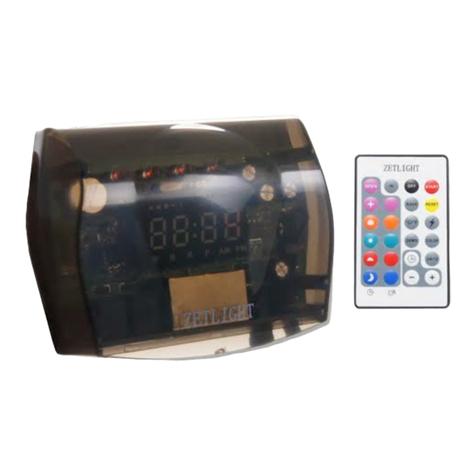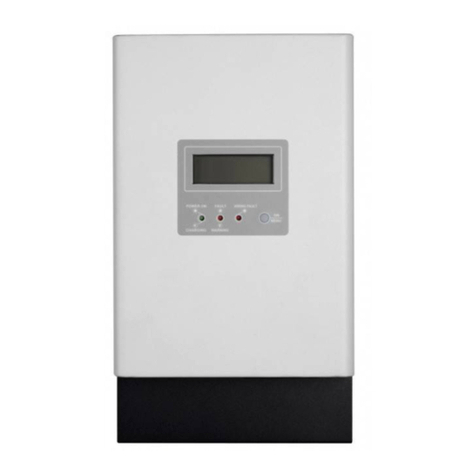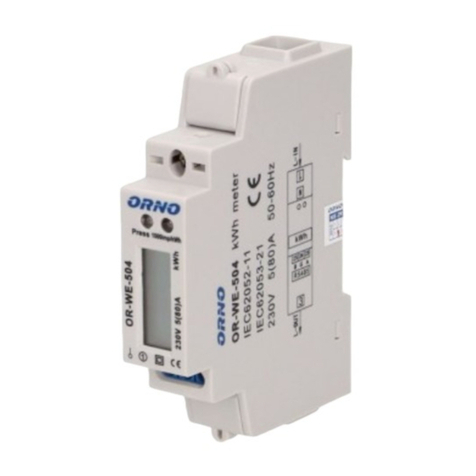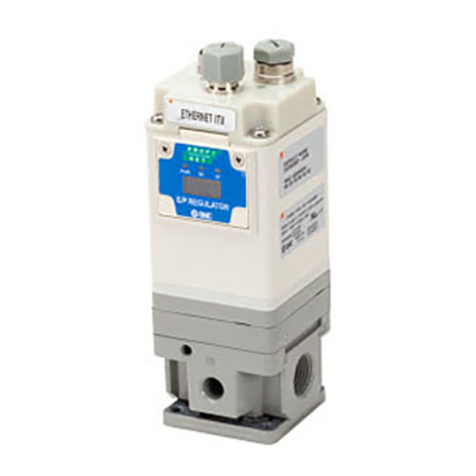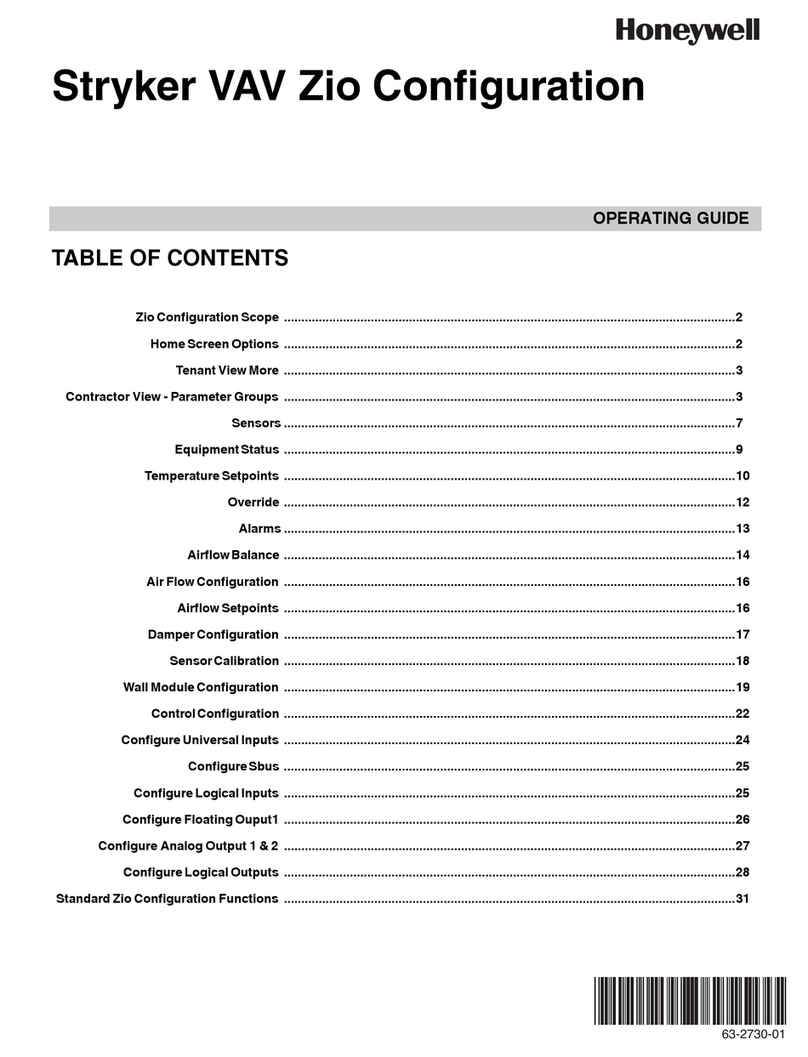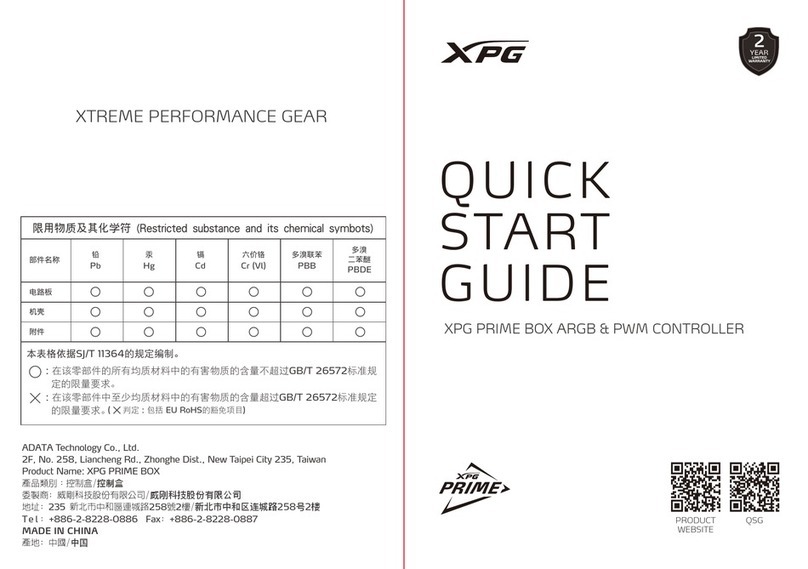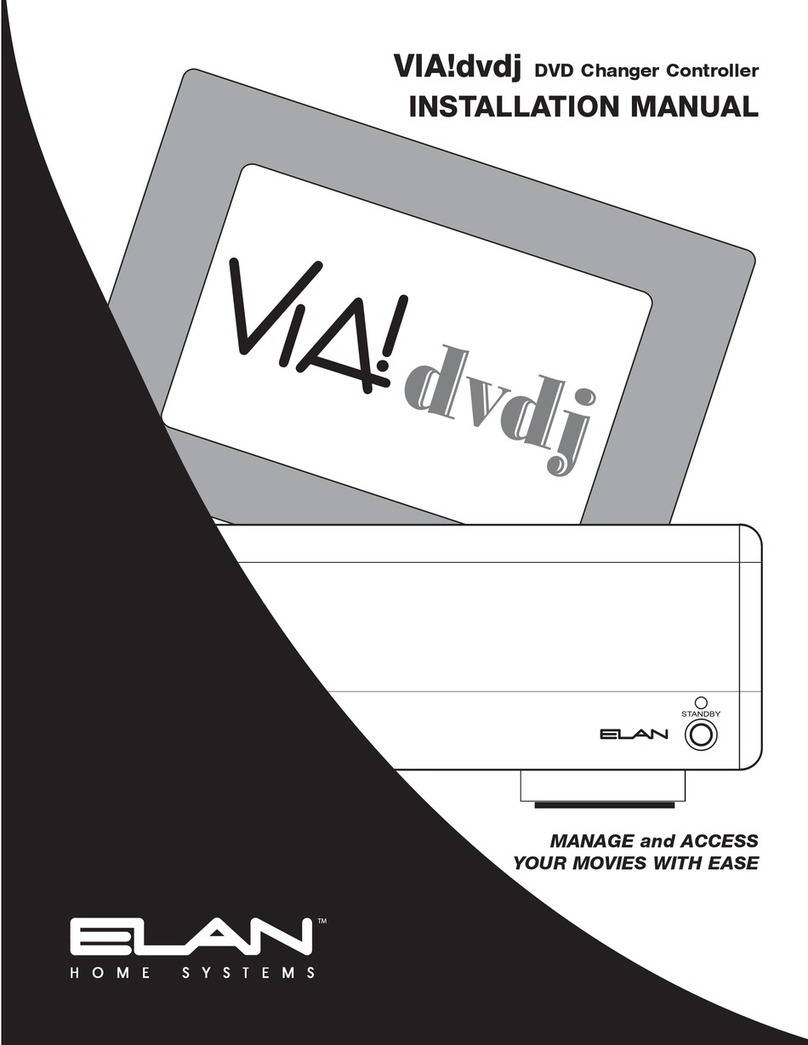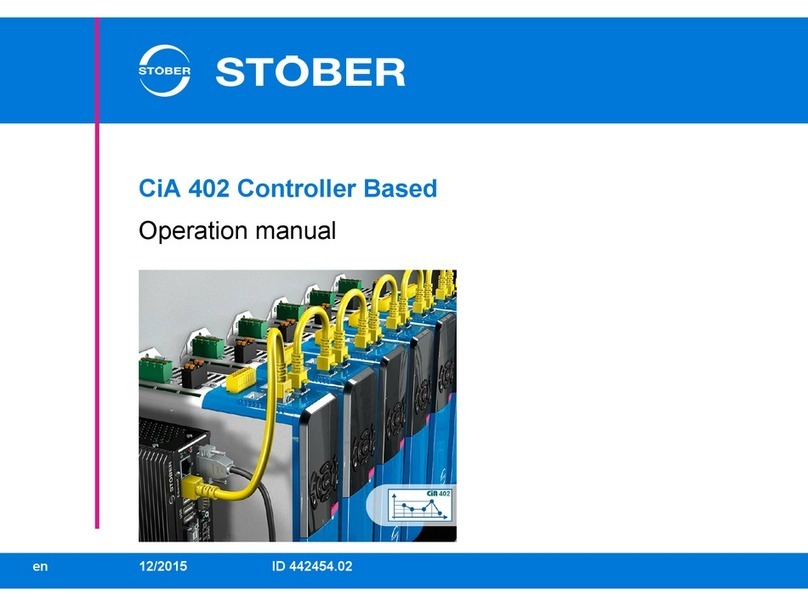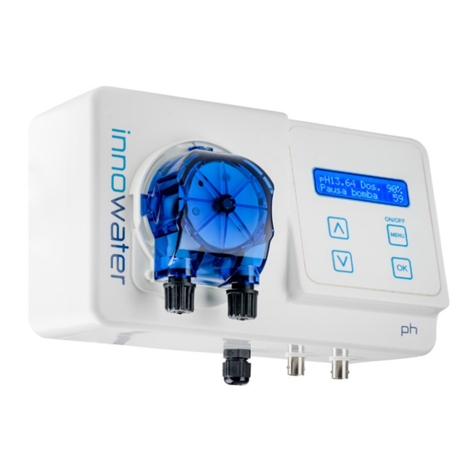Theben DU 1 User manual

2019-07-15
KNX manual
1-channel flush-mounted dimming
actuators
DU 1, DU 1 RF
4942570
4941670

Flush-mounted dimming actuators DU 1, DU 1 RF
Contents
1IMPORTANT WARNINGS! 3
2Function description 4
3Operation 5
4Technical data 6
4.1 Important information 8
5General information about KNX Secure 9
5.1 Start-up with "KNX Data Secure" 9
5.2 Start-up without "KNX Data Secure" 10
6The DU 1 application programme 11
6.1 Selection in the product database 11
6.2 Overview of communication objects 12
6.3 Description of communication objects 15
6.4 Parameter pages overview 24
6.5 General parameters 25
6.6 Parameters for the dimming actuator 26
6.7 Parameters for the external inputs I1, I2 purely as KNX binary inputs 44
6.8 Parameters for direct control of the dimming actuator 61
7Application examples 66
7.1 Direct control: Basic configuration 66
7.2 Controlling the dimming channel via the bus 68
8Appendix 71
8.1 General information about KNX RF 71
8.2 Use of the soft switch function 72
8.3 Use of the force function 78
8.4 Dimming LED lamps 79
8.5 4-bit telegrams (brighter/darker) 80
8.6 The scenes 82
8.7 Conversion of percentages to hexadecimal and decimal values 86

Flush-mounted dimming actuators DU 1, DU 1 RF
1IMPORTANT WARNINGS!
Risk of electric shock!
The device DU 1 RF does not have basic insulation around the terminals and plug
connection!
The inputs carry mains voltage!
When connecting the inputs or before any intervention at one of the inputs,
interrupt the 230 V supply of the device.
Protect against accidental contact during installation.
Maintain a minimum distance of 3 mm from live parts or use additional insulation,
e.g. separating strips/walls.
Do not remove the insulation from the unused inputs.
Do not cut off the conductors of the unused inputs.
Do not connect mains voltage (230 V) or other external voltages to the inputs!
During installation, ensure there is adequate insulation between mains voltage
(230 V) and bus or extensions (min. 5.5 mm).

Flush-mounted dimming actuator DU 1
2Function description
•1-channel flush-mounted universal dimming actuator
•Dimming range 0-100%
•For dimming incandescent lamps, low voltage and high voltage halogen lamps,
dimmable LED retrofit lamps
•Also suitable for controlling fans
•Dimming output: 250 W
•Automatic load detection (can be deactivated)
•For R, L and C-loads

Flush-mounted dimming actuator DU 1
3Operation
The device has 2 external inputs for buttons, switches, etc.
In the initial delivery condition, i.e. prior to KNX programming, the dimming actuator can
be operated directly with a button at I1.
Depending on the setting of the I1 external input in the ETS, the actuator can be operated in 2
different ways:
Control via bus telegrams.
This is the classic configuration for a KNX actuator.
The actuator is controlled exclusively via bus telegrams.
In this case, the external inputs I1 and I2 have no internal connection to the actuator.
Direct control (standard setting in the ETS)1
The dimming actuator channel can be operated with a conventional button.
This is connected directly to the external input I1.
The input I1 is then used exclusively for this function and is no longer connected to the
bus in this configuration, i.e. there are no communication objects.
The actuator itself retains all of its communication objects in this configuration.
See chapter Typical applications.
1Standard parameters button

Flush-mounted dimming actuator DU 1
4Technical data
Operating voltage
DU 1: KNX bus voltage
DU 1 RF: 230 – 240 V AC, 50 – 60 Hz
KNX bus current
2
5 mA
Operating voltage
230 – 240 V AC
Frequency
50 – 60 Hz
Standby output
< 0.15 W
L x W x D
44.5 x 44.5 x 32
Type of installation
Flush-mounted
Connection type
DU 1: Screw terminals | bus connection: KNX bus terminal
DU 1 RF: Screw terminals.
Max. cable cross-section
Solid: 0.5 mm² (Ø 0.8) to 4 mm²
strand with crimp terminal: 0.5 mm² to 2.5 mm²
Number of channels
1-channel
Lamp types Incandescent lamps, low-voltage and high-voltage halogen
lamps and LEDs
Incandescent/halogen lamp
load
250 W
LED lamps
Trailing edge: 200 W | leading edge: 24 W
3
Min. switching capacity
2 W
Max. cable length
100 m
Ambient temperature
-5 °C … +45 °C
Radio standard
KNX
Transmission frequency
868,3 MHz
Transmission power
10 mW
Coding
FSK (Frequency Shift Keying)
Transceiver type
Bidirectional
2Only DU 1.
3See next table

Flush-mounted dimming actuator DU 1
Load type Nominal
voltage
Ambient
temperature
Leading
edge
(L mode)
Trailing edge
(RC mode)
Possible max.
load
Incandescent lamps 230 V / 50 Hz 45 °C RC mode 200 W
Halogen lamps
Transformer
(inductive)
230 V / 50 Hz 25 °C L mode 200 VA
230 V / 50 Hz 45 °C L mode 130 VA
LED - lamp load 230 V / 50 Hz 45 °C RC mode 200 W
230 V / 50 Hz 45 °C L mode 12 W4
Electronic transformer 230 V / 50 Hz 25 °C RC mode 250 W
4The output with LED lamps in the leading edge is largely depending on the
lamp type. Therefore, the dimmer might dim down because of an excess temperature.
In this case, select the trailing edge operating mode!
The device will not be damaged by this.

Flush-mounted dimming actuator DU 1
4.1 Important information
The power supply (at the fuse box) must be switched off without fail when replacing
lamps.
The connection of dimmers in series or in parallel is not permitted.
Do not install adjustable transformers ahead of the dimmer.
Ripple control pulses from electric power plants may cause temporary flickering of the
lighting.
When connecting a larger number of LED lamps in parallel, the function might be
impaired even with loads < 250W.
The reason for this are the accumulating inrush currents, which may vary widely,
depending on the type of lamp.

Flush-mounted dimming actuator DU 1
5General information about KNX Secure
ETS5 Version 5.5 and higher support secure communication in KNX systems. A distinction is
made between secure communication via the IP medium using KNX IP Secure and secure
communication via the TP and RF media using KNX Data Secure. The following information
refers to KNX Data Secure.
In the ETS catalogue, KNX products supporting "KNX-Secure" are clearly identified.
As soon as a "KNX-Secure" device is included in the project, the ETS requests a project
password. If no password is entered, the device is included with Secure Mode deactivated.
However, the password can also be entered or changed later in the project overview.
5.1 Start-up with "KNX Data Secure"
For secure communication, the FDSK (Factory Device Setup Key) is required. If a KNX product
supporting "KNX Data Secure" is included in a line, the ETS requires the input of the FDSK. This
device-specific key is printed on the device label and can either be entered by keyboard or read
by using a code scanner or notebook camera.
Example of FDSK on device label:
After entering the FDSK, the ETS generates a device-specific tool key. The ETS sends the tool
key to the device to be configured via the bus. The transmission is encrypted and authenticated
with the original and previously entered FDSK key. Neither the tool key nor the FDSK key are
sent in plain text via the bus.
After the previous action, the device only accepts the tool key for further communication with
the ETS.
The FDSK key is no longer used for further communication, unless the device is reset to the
factory setting: In this case, all set safety-related data will be deleted.
The ETS generates as many runtime keys as needed for the group communication you want to
protect. The ETS sends the runtime keys to the device to be configured via the bus.
Transmission takes place by encrypting and authenticating them via the tool key. The runtime
keys are never sent in plain text via the bus.
The FDSK is saved in the project and can be viewed in the project overview.
Also, all keys of this project can be exported (backup).
During project planning, it can be defined subsequently which functions / objects are to
communicate securely. All objects with encrypted communication are identified by the "Secure"
icon in the ETS.

Flush-mounted dimming actuator DU 1
5.2 Start-up without "KNX Data Secure"
Alternatively, the device can also be put into operation without KNX Data Secure. In this case,
the device is unsecured and behaves like any other KNX device without KNX Data Secure
function.
To start up the device without KNX Data Secure, select the device in the 'Topology' or 'Devices'
section and set the 'Secure start up' option in the 'Properties' area of the 'Settings' tab to
'Disabled'.

Flush-mounted dimming actuator DU 1
6The DU 1 application programme
6.1 Selection in the product database
Manufacturer
Theben AG
Product family
Output
Product type
DU 1 / DU 1 RF
Programme name
DU 1 / DU 1 RF
The ETS database can be found on our website: www.theben.de/en/downloads_en
Number of communication objects
34
Number of group addresses
254
Number of associations
255

Flush-mounted dimming actuator DU 1
6.2 Overview of communication objects
6.2.1 Dimmer, channel C1
No.
Object name
Function
Length
R
W
C
T
DPT
1
Channel C1
Switching ON/OFF
1 bits
-
W
C
-
1.001
2
Channel C1
Brighter / darker
4 bits
-
W
C
-
3.007
3
Channel C1
Dimming value
1 bytes
-
W
C
-
5.001
4
Channel C1
Soft switching
1 bits
-
W
C
-
1.001
5
Channel C1
Block
1 bits
-
W
C
-
1.001
6
Channel C1
Call up/save scenes
1 bytes
-
W
C
-
18.001
7 Channel C1
Enable scenes = 1
1 bits
-
W
C
-
1.001
Block scenes = 1
1 bits
-
W
C
-
1.001
8 Channel C1
Force
2 bits
-
W
C
-
2.001
Dimming value with force
1 bytes
-
W
C
-
5.001
Force = 1
1 bits
-
W
C
-
1.001
Force = 0
1 bits
-
W
C
-
1.001
9
Channel C1
Dimming value limit
1 bytes
-
W
C
-
5.001
10
Channel C1
Feedback On/Off
1 bits
R
-
C
T
1.001
11
Channel C1
Feedback in %
1 bytes
R
-
C
T
5.001
12 Channel C1
Operating hours feedback
4 bytes
R
-
C
T
13.100
Time to next service
4 bytes
R
-
C
T
13.100
13
Channel C1
Service required
1 bits
R
-
C
T
1.001
14 Channel C1
Reset service
1 bits
-
W
C
-
1.001
Reset operating hours
1 bits
-
W
C
-
1.001
15
Channel C1
General error message
1 bits
R
-
C
T
1.001
16
Channel C1
Short circuit message
1 bits
R
-
C
T
1.001
17
Channel C1
Excess temperature message
1 bits
R
-
C
T
1.001
18
Channel C1
Mains power failure
1 bits
R
-
C
T
1.001
19
Channel C1
Load type message
1 bytes
R
-
C
T
20.610

Flush-mounted dimming actuator DU 1
6.2.2 External inputs: Switch/button function
No. Object name Function Length R W C T DPT
41 Channel I1.1
Switching 1 bit R W C T 1.001
Priority 2 bits R - C T 2.001
Send percentage value 1 byte R - C T 5.001
Send value 1 byte R - C T 5.010
42 Channel I1.2
Switching 1 bit R W C T 1.001
Priority 2 bits R - C T 2.001
Send percentage value 1 byte R - C T 5.001
Send value 1 byte R - C T 5.010
45 Channel I1 Block = 1 1 bit - W C - 1.001
Block = 0 1 bit - W C - 1.003
51-55 Channel I2 (details: see channel I1)
6.2.3 External inputs: Dimming function
No. Object name Function Length R W C T DPT
41 Channel I1 Switching 1 bit R W C T 1.001
42 Channel I1
Brighter / darker 4 bits R - C T 3.007
Brighter 4 bits R - C T 3.007
Darker 4 bits R - C T 3.007
43 Channel I1.1
Switching 1 bit R W C T 1.001
Priority 2 bits R - C T 2.001
Send percentage value 1 byte R - C T 5.001
Send value 1 byte R - C T 5.010
45 Channel I1 Block = 1 1 bit - W C - 1.001
Block = 0 1 bit - W C - 1.003
51-55 Channel I2 (details: see channel I1)

Flush-mounted dimming actuator DU 1
6.2.4 External inputs: Blinds function
No. Object name Function Length R W C T DPT
41 Channel I1 Step / stop 1 bit R - C T 1.010
42 Channel I1
UP / DOWN 1 bit R W C T 1.008
UP 1 bit R - C T 1.008
DOWN 1 bit R - C T 1.008
43 Channel I1.1
Switching 1 bit R W C T 1.001
Priority 2 bits R - C T 2.001
Send percentage value 1 byte R - C T 5.001
Height % 51 byte R - C T 5.001
Send value 1 byte R - C T 5.010
2-byte 9.x 2 bytes R - C T 9.xxx
4-byte 14.x 4 bytes R - C T 14.xxx
44 Channel I1.2 Slat % 61 byte R - C T 5.001
45 Channel I1 Block = 1 1 bit - W C - 1.001
Block = 0 1 bit - W C - 1.003
51-55 Channel I2 (details: see channel I1)
6.2.5 External inputs: Temperature input function (I2 only)
No. Object name Function Length R W C T DPT
51 Channel I2
Actual value for
temperature
2 bytes R - C T 9.001
6.2.6 Common objects
No. Object name Function Length R
W
C T DPT
71 Central Central permanent ON 1 bit - W
C - 1.001
72 Central Central permanent OFF 1 bit - W
C - 1.001
73 Central Central switching 1 bit - W
C - 1.001
74 Central Call up/save central scenes 1 byte - W
C - 18.001
75
Firmware version
Send
2 bytes
R
-
C
T
217.001
5Upon double-click with object type = height % + slat %
6Upon double-click with object type = height % + slat %

Flush-mounted dimming actuator DU 1
6.3 Description of communication objects
6.3.1 Objects for the dimming actuator
Object 1: Switching ON/OFF
1 = switch on load.
0 = switch off load.
See also: Parameter Switch-on value.
Object 2: Brighter/darker
This object is actuated with 4-bit telegrams (DPT 3,007 Control Dimming).
This function can be used to dim the light up or down
in increments.
In the standard application, telegrams are sent with 64 increments.
IMPORTANT: The response to 4-bit telegrams depends on the
Switching On/Off with a 4-bit telegram parameter from.
See appendix: 4-bit telegrams (brighter/darker)
Object 3: Dimming value
This object can be used to select the desired dimmer setting directly.
Format: 1 byte percentage value.
0 = 0%
255 = 100%
Object 4: Soft switching
A 1 on this object starts a soft switching cycle, i.e.:
The brightness is gradually increased, starting from the minimum brightness.
The dimming value remains constant for the programmed time and is then gradually reduced
after this time has elapsed.
Once the programmed minimum brightness has been reached, the dimming value is reset to
0%.
The cycle can be extended or prematurely terminated via telegrams
This sequence can also be controlled using a time switch if the Time between soft ON and soft
OFF parameter is set to Until soft OFF telegram.
The dimming cycle is then started with a 1 and finished with a 0.
See appendix: Use of the soft switch function
Object 5: Block
Responses to the block being set and cancelled can be configured if the block function has been
activated (Configuration options Channel C1 parameter page).
The block only applies when the object is received, i.e. with 0 the channel is not blocked after
restoration of the bus supply.
If the parameter Behaviour when setting the block = no reaction, a running soft-switch process
will not be interrupted.

Flush-mounted dimming actuator DU 1
Object 6: Call up/save scenes
Only available if the scene function has been activated (Configuration options parameter page).
This object can be used to save and subsequently call up scenes.
Saving stores the dimming value of the channel.
It does not matter how this dimming value is produced (whether via switch commands, central
objects or the buttons on the device).
The saved dimming value is restored when it is called up.
All scene numbers from 1 to 63 are supported.
The channel can participate in up to 8 scenes.
See appendix: Scenes
Object 7: Enable scenes = 1, block scenes = 1
Blocks the scene function with a 1 or a 0 depending on the configuration.
As long as it is blocked, scenes cannot be saved or called up.
Object 8: Force, dimming value during force, force = 1, force = 0
The function of the force object can be configured as a 1-bit, 2-bit or 1-byte object.
Format of
force
object
Force
Response with force
trigger with
end with
Start
End
1 bit
1 or 0
(configurable)
0 or 1
(configurable)
configurable in the application program
2 bits
Force On = 3
Force Off = 2
Deactivate
force
= 0 or 1
configurable in the
application program.
The last dimming
value before force
is restored
1 byte
1-100%
0
The triggering telegram also
acts simultaneously as a
force dimming value
The last dimming
value before force
is restored
Object 9: Dimming value limit
The value received will be accepted as the maximum configurable dimming value.
Its range of applicability is defined on the Dimming value limits parameter page.
Object 10: Feedback On/Off
Sends the current dimming status:
1 = current dimming value is between 1% and 100%
0 = current dimming value is 0%
Object 11: Feedback in %
Sends the new dimming value after a change as soon as a dimming process is completed, i.e.
once the new set point value has been reached.
Format: 1 byte, 0 ... 255 i.e. 0 ... 100%

Flush-mounted dimming actuator DU 1
Object 12: Operating hours feedback, time to next service
Only available if the hour counter function is activated
(Configuration options parameter page).
Reports, depending on selected type of hour counter (Hour counter and service parameter
page), either the remaining period to the next set service or the current status of the hour
counter.
Object 13: Service required
Only available if the hour counter function is activated
(Configuration options parameter page) and Type of hour counter = Counter for time to next
service.
Reports if the next service is due.
0 = not due
1 = service is due.
Object 14: Reset service, reset operating hours
Only available if the hour counter function is activated
(Configuration options parameter page).
Object 15: General error message
Used as a malfunction signal:
0 = no error
1 = an error has been detected
This message can, for example, be displayed in a display
Object 16: Short circuit message
0 = OK
1 = short circuit at dimmer output:
Check connected lines and load.
Object 17: Excess temperature message
0 = OK
1 = the dimmer is overloaded:
•connected power is too high,
•ambient temperature is too high,
•incorrect installation position, i.e. device cannot dissipate the heat
Object 18: Mains power failure
0 = OK
1 = no mains voltage available:
Mains failure or defective hardware.

Flush-mounted dimming actuator DU 1
Object 19: Load type message
Feedback of detected load type in DPT20.610 format.
0 = undefined
1 = leading edge (L-load connected), conventional transformers
2 = trailing edge (C-load connected), electronic transformers or incandescent lamp load
This control is also used for resistive loads (R-loads).
3 = no load detection possible, or error.

Flush-mounted dimming actuator DU 1
6.3.2 Objects for the external inputs: Switch function
Object 41: Channel I1.1
First output object of the channel (first telegram).
4 telegram formats can be set:
Switching ON/OFF, priority, send percentage value, send value.
Object 42: Channel I1.2
Second output object of the channel (second telegram).
4 telegram formats can be set:
Switching ON/OFF, priority, send percentage value, send value.
Object 45: Channel I1 block = 1, or block = 0
The channel is blocked via this object.
The acting direction of the block object and behaviour when the block is set or cancelled can be
configured.
Objects 51-55
Objects for channel I2

Flush-mounted dimming actuator DU 1
6.3.3 Objects for the external inputs: Button function
Object 41: Channel I1.1
First output object of the channel (first telegram).
4 telegram formats can be set:
Switching ON/OFF, priority, send percentage value, send value.
Object 42: Channel I1.2
Second output object of the channel (second telegram).
4 telegram formats can be set:
Switching ON/OFF, priority, send percentage value, send value.
Object 45: Channel I1 block = 1, or block = 0
The channel is blocked via this object.
The acting direction of the block object and behaviour when the block is set or cancelled can be
configured.
Objects 51-55
Objects for channel I2
This manual suits for next models
3
Table of contents
Other Theben Controllers manuals
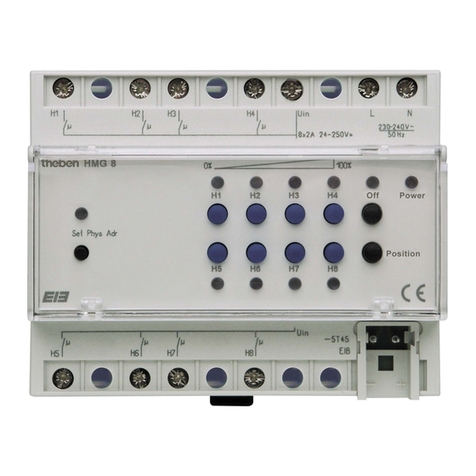
Theben
Theben HMG 8 User manual
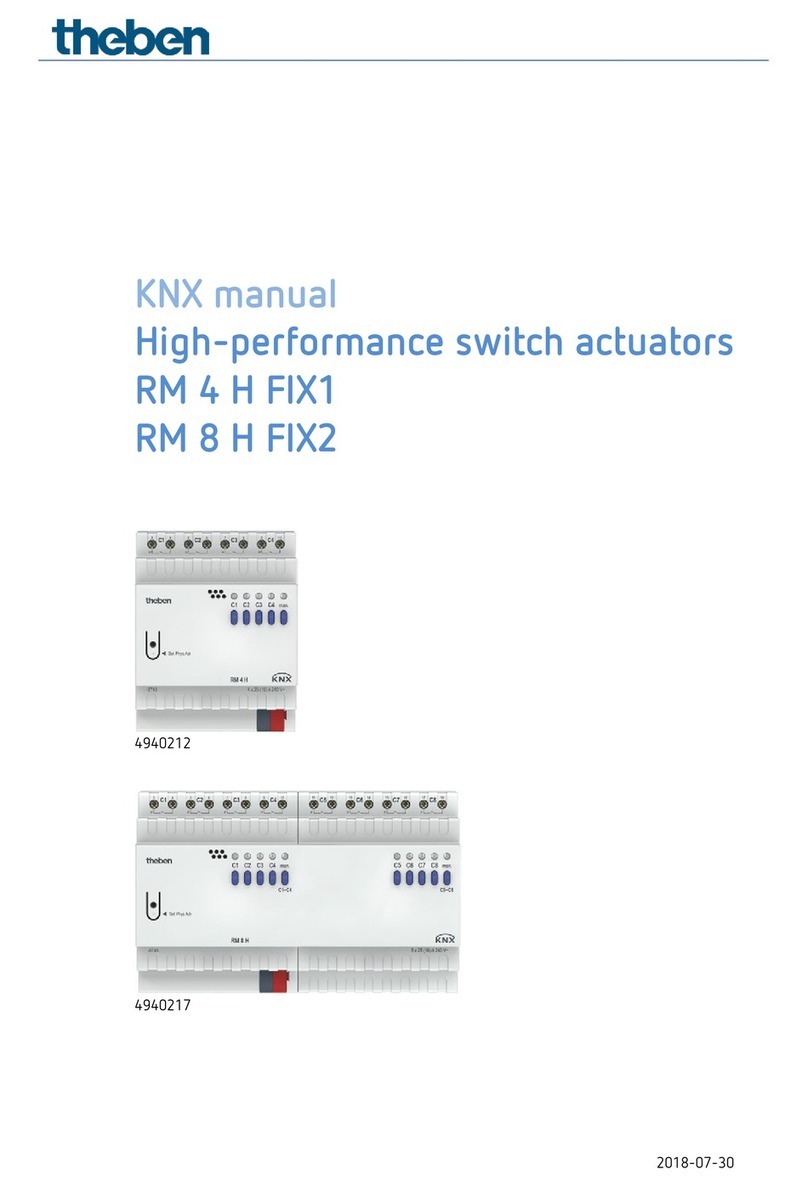
Theben
Theben RM 4 H FIX1 User manual
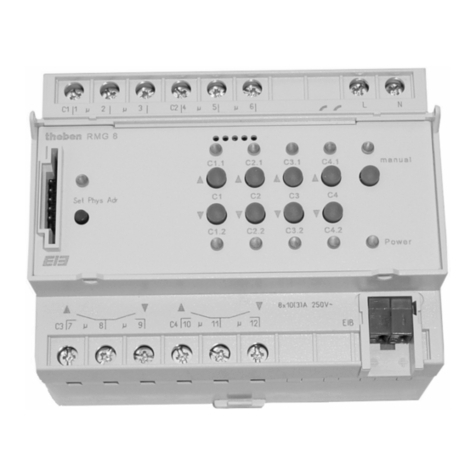
Theben
Theben RMG 8 User manual
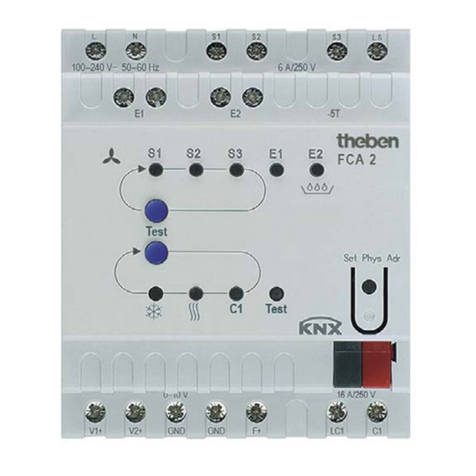
Theben
Theben FCA 2 User manual
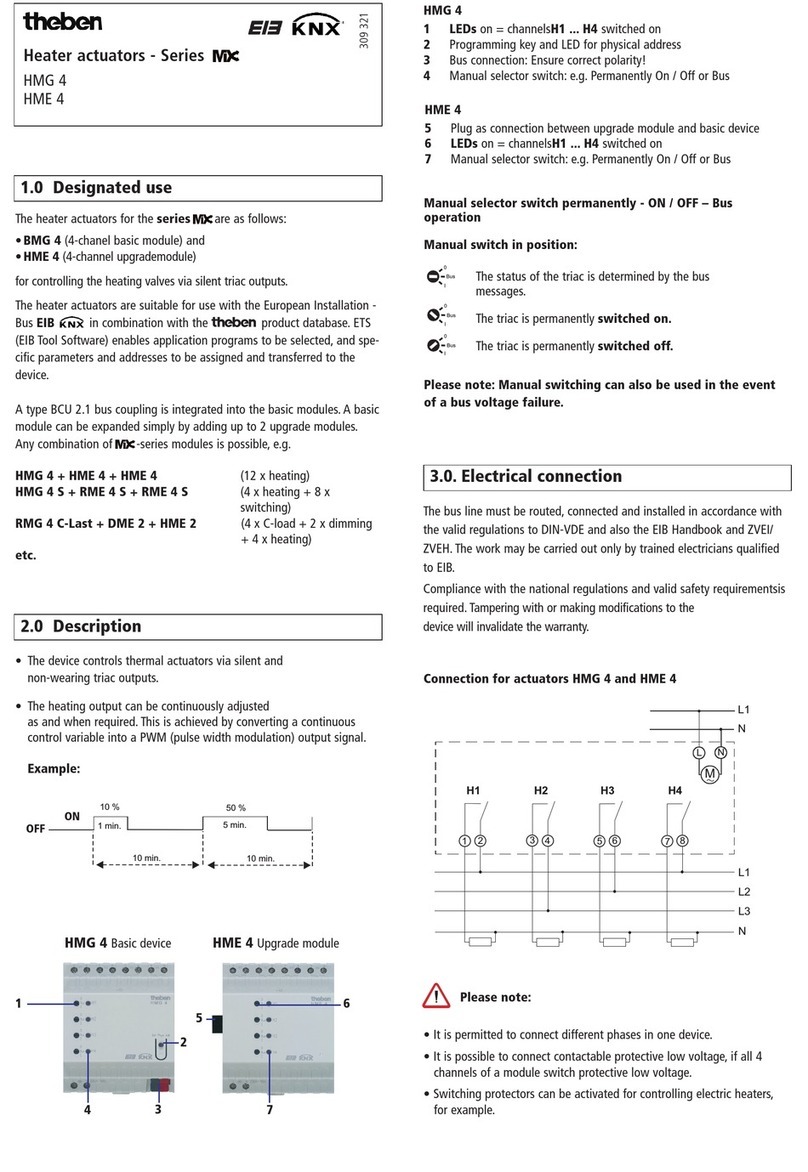
Theben
Theben Mix Series User manual
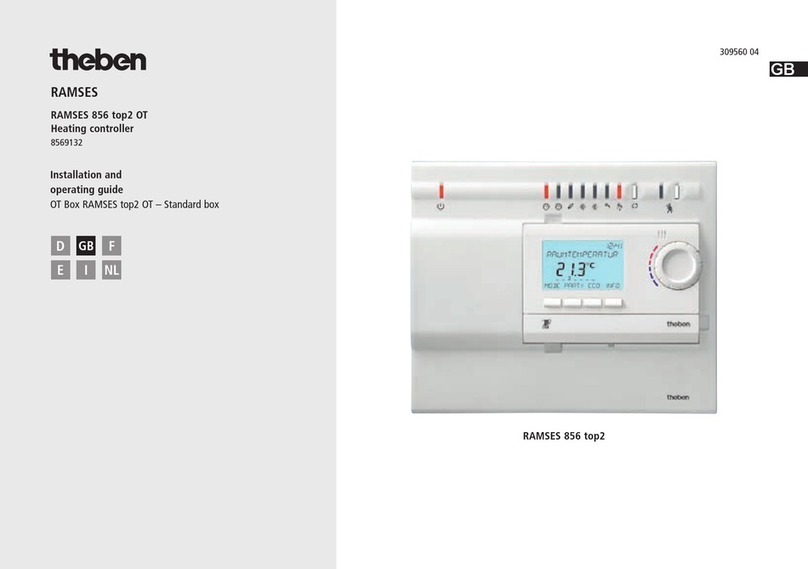
Theben
Theben RAMSES 856 top2 Installation guide

Theben
Theben PH-II Series User manual
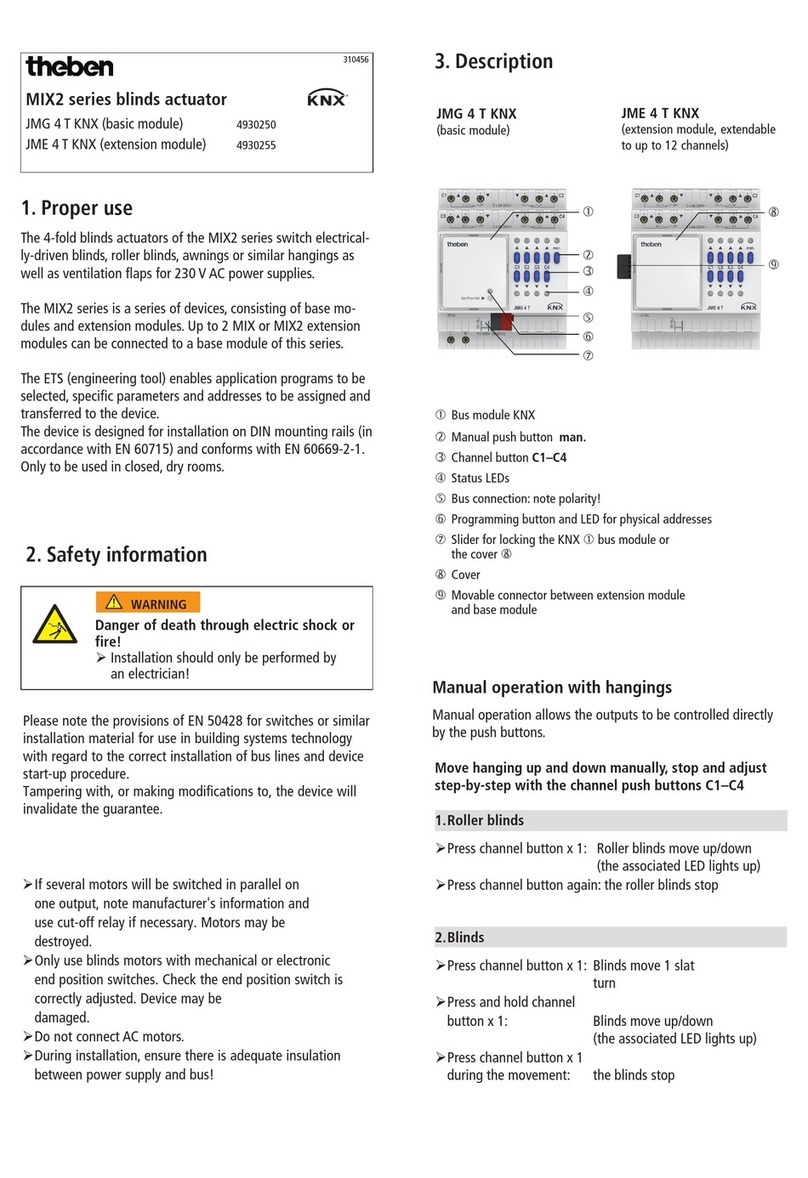
Theben
Theben JMG 4 T KNX User manual
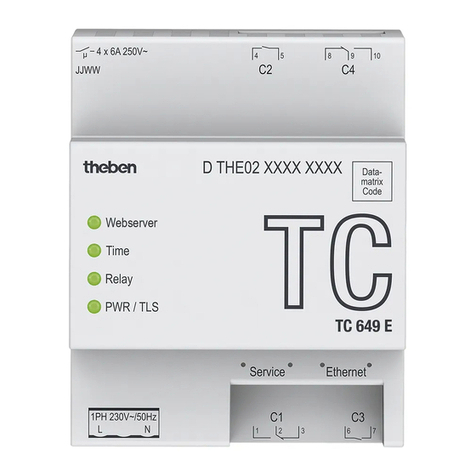
Theben
Theben TC 649 E User manual
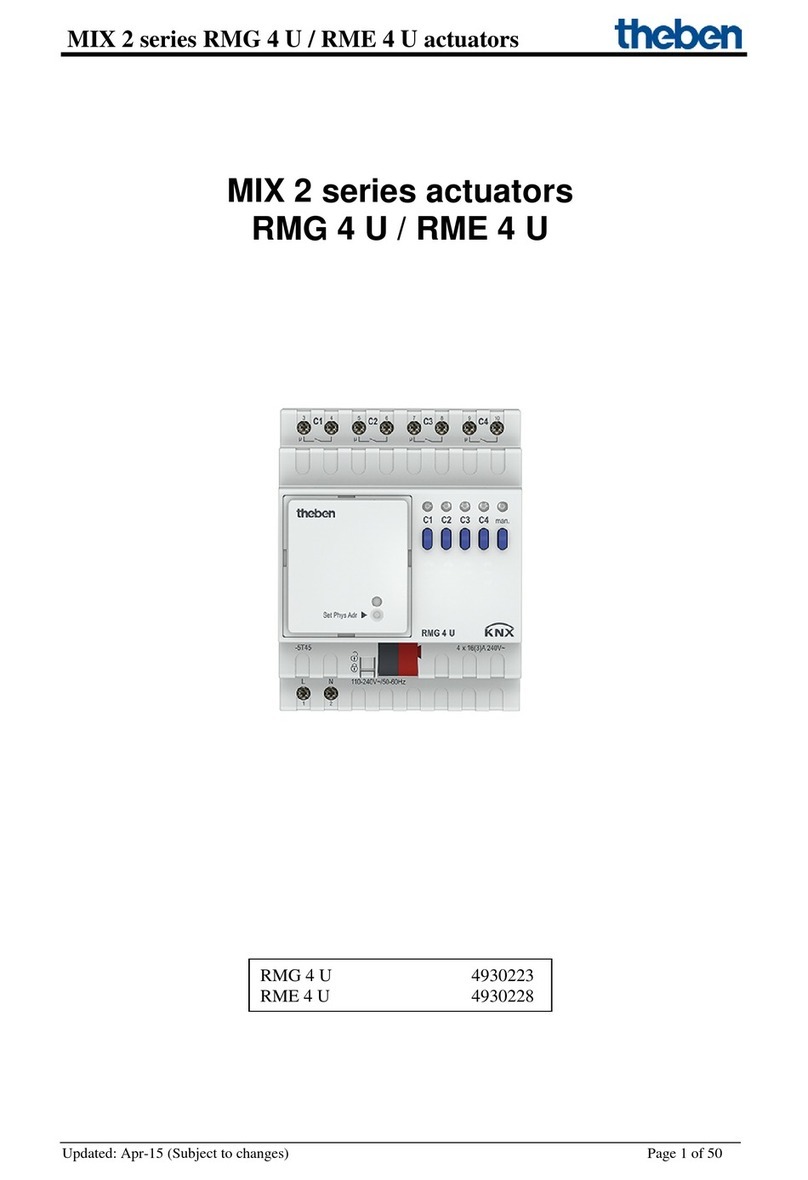
Theben
Theben MIX 2 Series User manual
